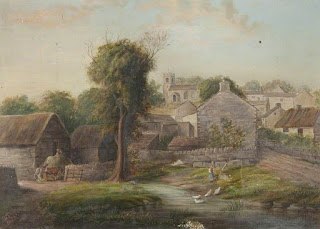“When
I use a word,” Humpty Dumpty said, in rather a scornful tone, “It means just
what I choose it to mean—neither more nor less.”
“The
question is,” said Alice, “Whether you can make words mean so many different
things.”
“The
question is,” said Humpty Dumpty, “which is to be master—that’s all.
#
Thandie Newton caused a small
argument last night. In an article she regretted the fact that people of colour
were essentially barred from historical costume dramas unless they portrayed an
occasional domestic or slave. My opening gambit – a gut instinct because I’m a
historian – was that is just an unfortunate fact of life, or if you wish, a
fact of the past.
I was challenged by ‘musicals.’ I
don’t like musicals very much, for me their essentially fluff and tosh with the
occasional hummable tune. Others view them as creative extravaganzas. Both views subjective, both equally valid. Each to their own. ‘What about musicals?’ I
said.
‘Hamilton. He wasn’t a black man.’
‘And Cats . . . Lion-king, you
don’t have singing cats and moralistic lions,’ I said. We both agreed that the
Musical was a form of creative expression bound by its own rules, Opera, too, I
imagine. Wotan, the ultimate Aryan, could probably be played by a black man
with few turning a hair, though Wagner might not be best pleased. We agreed
that Shakespeare, too, was a special point, in the sense that his poetry and
message was universal and transcended race.
‘So why are you opposed to
colour-blind costume dramas?’ It was said with the tone of one who checkmates.
Because they’re essentially
historical and whilst you can fabricate or omit small details in the interests
of drama - (though I did demur at the teenage Victoria having the hots for Lord
Melbourne, in real life an elderly man prone to afternoon sleeps but played by
the seductive Rufus Sewell) – you have to stick to the essentials. You can’t
have Victoria played by an Indian, give Queen Elizabeth I a scouse accent, make
William the Conqueror Chinese, make George Washington black. I appreciate these
are rhetorical statements and in real life you can do anything you want, but
then like fake science and fake news you’d be immersing a culture in fake
history – harmless enough you might say, but not unsurprisingly I disagree.
You can't change the past for the perceived needs of the present. The past is a world of its own and never entirely
knowable, neither is science, but both disciplines strive for the truth, and
history is important—even in costume dramas.
‘He who controls the past controls the future.
He who controls the present controls the past.’ George Orwell ‘1984’ Well we
haven’t yet got a global Erdogan but we do have Google and some interesting
algorithms. Google: European peoples — and
then images. I haven’t yet got my head around this.
Maybe manipulation and
algorithms are the future the historians small sad nonentities, inverted
Cassandras who can talk of the past and have no one believe them.
-->
















